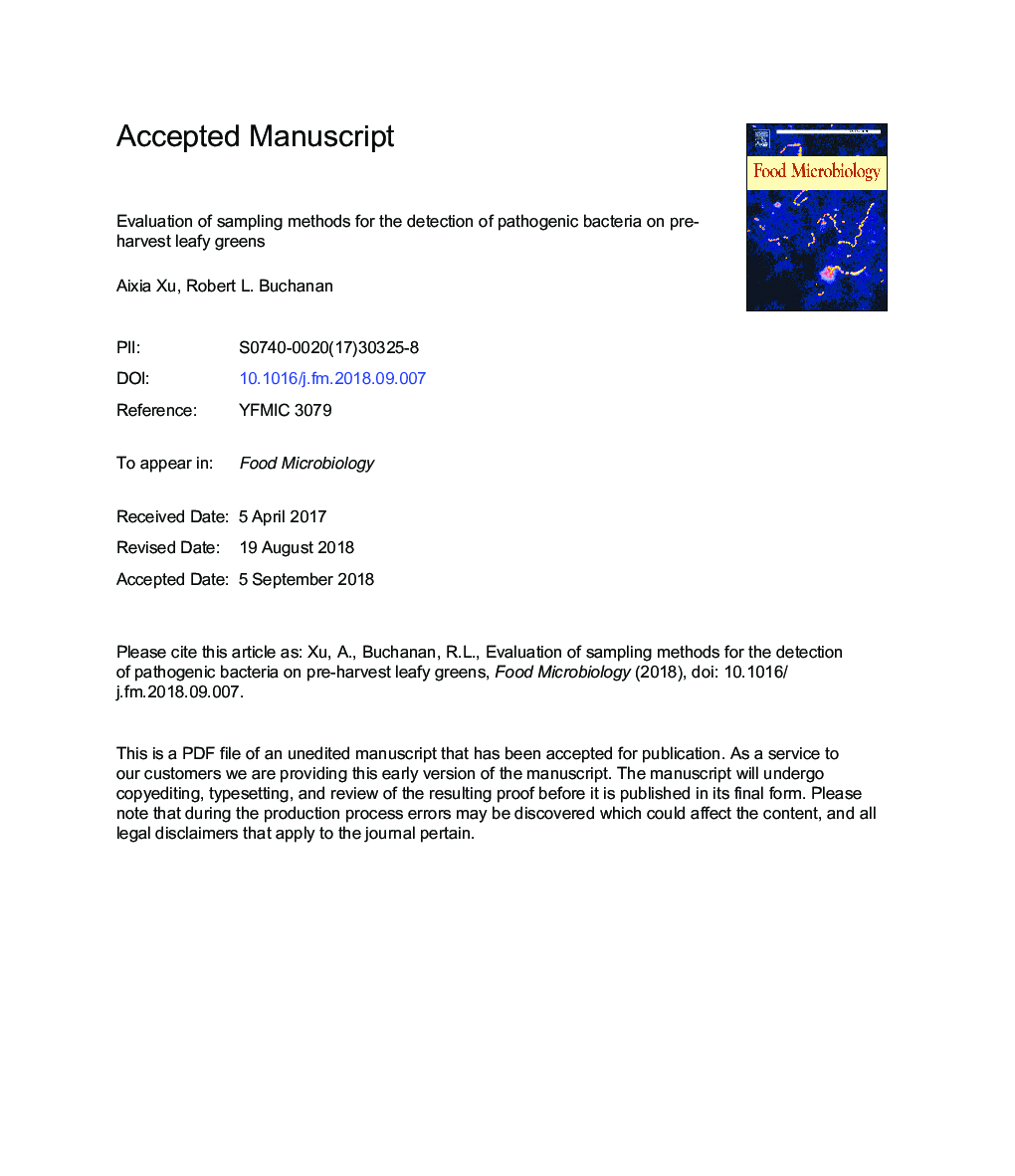| Article ID | Journal | Published Year | Pages | File Type |
|---|---|---|---|---|
| 10130142 | Food Microbiology | 2019 | 39 Pages |
Abstract
Recent outbreaks of foodborne disease associated with leafy greens have led to increased pre-harvest testing for pathogens and indicator microorganisms. However, the scientific and statistical rationale and the performance attributes for pre-harvest sampling methods are not well understood. The performance of three pre-harvest sampling methods, random, stratified random, and Z-pattern sampling, was evaluated by consideration of their mathematical derivations, computer simulations and field validation. Consideration of the probabilistic basis of the sampling methods indicated that the mean detection rates were similar. However, use of simulation modeling to assess the uncertainty associated with the three sampling methods indicated that the inherent variability of the Z-pattern sampling method was substantially greater than the other two sampling methods. A simulation tool was developed in Matlab that allowed the evaluation of the effectiveness of the three sampling methods. A limited validation study also observed that Z-pattern sampling had higher variability than the other two sampling methods. This study indicates that while the mean detection probabilities for the three sampling methods are similar, the random or stratified random sampling are less variable, particularly when the number of contamination sites or number of samples analyzed are small.
Keywords
Related Topics
Life Sciences
Agricultural and Biological Sciences
Food Science
Authors
Aixia Xu, Robert L. Buchanan,
